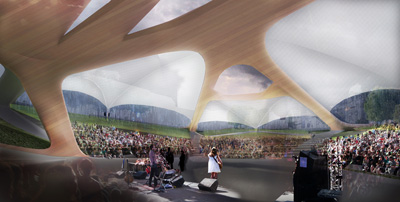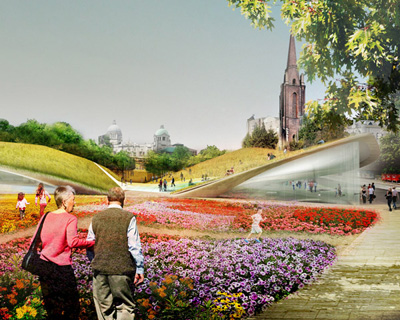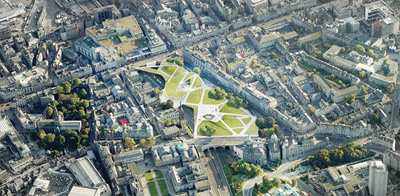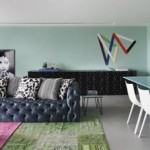Project: Abedeen City Garden
Designed by Diller Scofidio + Renfro, Keppie Design & Olin Studio
Location: Abedeen, United Kingdom
Website: www.dsrny.com , www.keppiedesign.co.uk & www.theolinstudio.com
Diller Scofidio + Renfro, Keppie Design & Olin Studio team up to deliver the winning proposal for Abedeen City Garden design, providing additional green space and a new landmark to the city.
About the Project:
The successful proposal, popularly known as the Granite Web, celebrates the three-dimensional aspects of Aberdeen, reinterpreting the topography of the Denburn Valley and the dramatic cascade of the existing Union Terrace Gardens while creating graceful new spaces and structures that contribute to a memorable and thrilling contemporary design.
It provides additional usable garden space, a landmark cultural and arts centre, and promotes the City’s historic streets, revealing the arches, vaults and bridge on Union Street and retaining the balustrades and statues which are part of Aberdeen’s legacy.
The Jury’s decision represents a breakthrough for DS+R giving them their first major European design competition win. DS+R Partner, Charles Renfro said the practice was very excited about ‘jumping across the pond’, commenting:
‘The steep competition drove us that much harder to do more research, to understand the site more thoroughly, to dig deeper into our creative reserve and our technical expertise to find a daring, thoughtful and beautiful solution.
‘While the City Garden is at the heart of Aberdeen, the heart has little pulse…we feel that we can make that heart throb and bring life and energy into the centre of town. By making the park greener, more accommodating to passive and active uses, more engaged at its edges, the gardens can become a magnet for this otherwise youthful and energetic city. We feel particularly well- suited to this challenge – the project reflects an integration of landscape design, museum design and design for the performing arts, the primary focuses of our practice.’
The Jury weighed information from a technical panel, face-to-face discussions with the respective teams, public and stakeholder feedback; the two finalists’ schemes being those most popular in a public exhibition held in the city in the autumn. The winning design scored higher in all key areas of the brief including, creation of more new space, cost and viability in construction and on-going maintenance, environmental sustainability and energy efficiency.
Source Malcolm Reading. *







